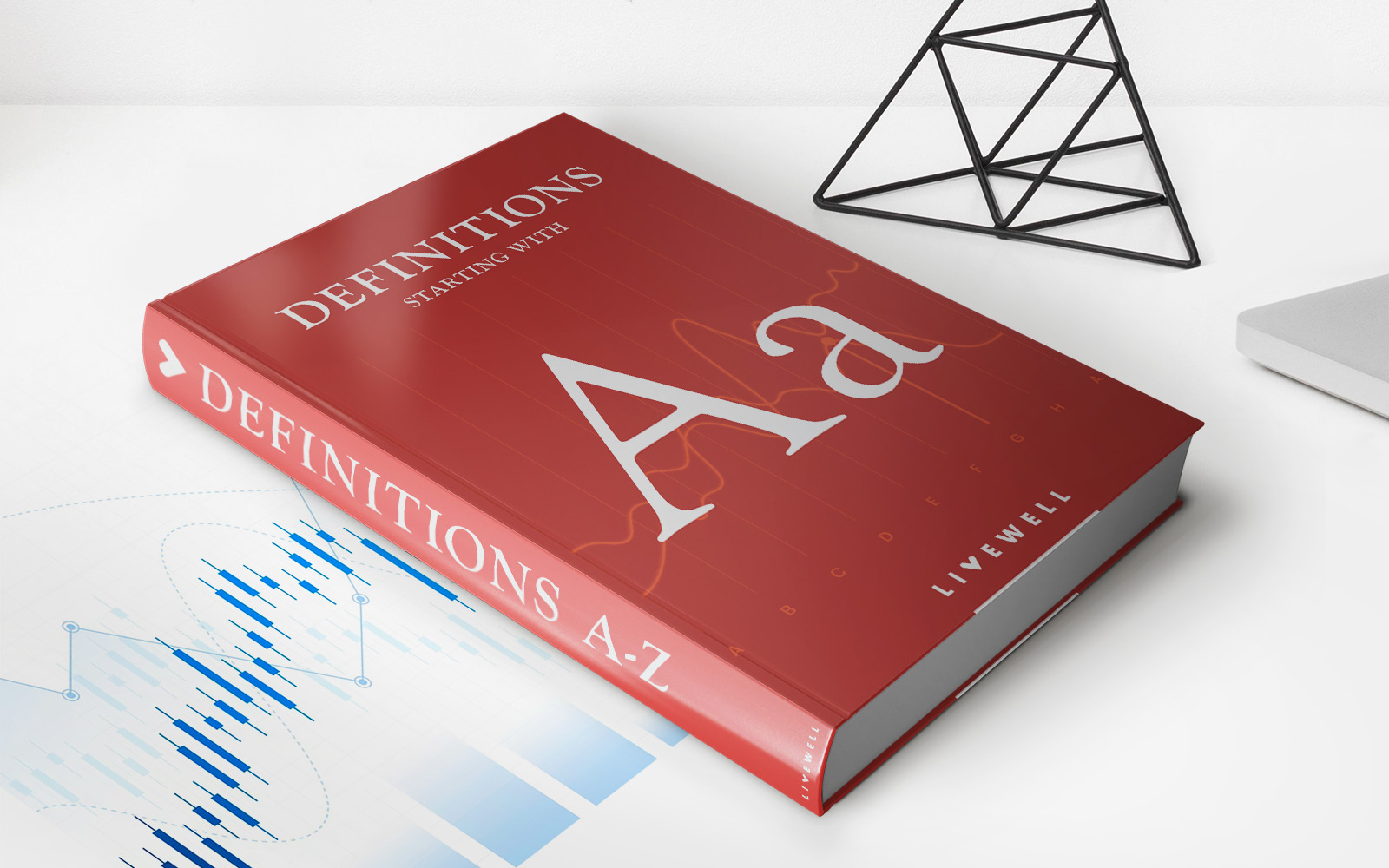Home>Finance>What Is Different About The Grace Period For A Perkins Loan And Other Federal Student Loans?


Finance
What Is Different About The Grace Period For A Perkins Loan And Other Federal Student Loans?
Published: February 21, 2024
Learn about the unique grace period for Perkins loans and how it differs from other federal student loans. Understand the financial implications and repayment options.
(Many of the links in this article redirect to a specific reviewed product. Your purchase of these products through affiliate links helps to generate commission for LiveWell, at no extra cost. Learn more)
Table of Contents
Introduction
When it comes to financing higher education, many students rely on federal student loans to bridge the gap between tuition costs and available resources. These loans offer various benefits, including fixed interest rates and flexible repayment options, making them a popular choice among borrowers. However, not all federal student loans are created equal, and each type may come with its own unique terms and conditions.
In particular, the grace period – the time between graduation and the start of loan repayment – varies across different federal student loan programs. Understanding these differences is crucial for borrowers, as it can impact their financial planning and loan management strategies. In this article, we will delve into the specifics of the grace period for Perkins loans and compare them with other federal student loans, shedding light on the distinctive features that set them apart.
By gaining insights into the nuances of grace periods for different federal student loans, borrowers can make informed decisions and effectively navigate the post-graduation transition period without being caught off guard by unexpected loan repayment obligations.
Overview of Federal Student Loans
Before delving into the specifics of grace periods, it’s essential to grasp the broader landscape of federal student loans. These loans are issued by the U.S. Department of Education and are designed to assist students in covering the costs of higher education. They offer several advantages, such as fixed interest rates, income-driven repayment plans, and potential eligibility for loan forgiveness programs.
There are various types of federal student loans, including Direct Subsidized Loans, Direct Unsubsidized Loans, Direct PLUS Loans, and Perkins Loans. Each type has its unique features and eligibility criteria. Direct Subsidized Loans are based on financial need, and the government pays the interest while the borrower is in school and during the grace period. Direct Unsubsidized Loans are available to all students regardless of financial need, but the borrower is responsible for all the interest, which may be deferred while in school. Direct PLUS Loans are credit-based loans available to graduate or professional students and parents of dependent undergraduate students. Perkins Loans are low-interest federal student loans for undergraduate and graduate students with exceptional financial need.
Understanding the distinctions between these loan types is crucial for students and their families when making informed decisions about financing higher education. Now, let’s explore the grace period, a significant aspect of federal student loans that warrants careful consideration.
Understanding the Grace Period
The grace period is a critical component of federal student loans, providing borrowers with a transitional period after graduation, leaving school, or dropping below half-time enrollment. During this time, which typically lasts six to nine months, depending on the loan program, borrowers are not required to make payments on their loans. This period serves as a buffer, allowing individuals to secure employment and establish their financial footing before commencing loan repayments.
It’s important to note that the grace period offers a valuable opportunity for borrowers to organize their finances and explore various repayment options. During this period, individuals can set up their repayment plans, consolidate loans, and calculate their monthly payments based on their post-graduation income. Additionally, the grace period provides a window for borrowers to address any changes in personal circumstances and make necessary adjustments to their financial plans.
While the grace period offers breathing room for borrowers, it’s essential to understand that interest may continue to accrue on certain types of loans, such as unsubsidized loans, during this period. This means that even though payments are not yet due, the outstanding interest is gradually adding to the overall loan balance. As a result, borrowers should carefully consider their options and, if possible, make interest payments during the grace period to prevent it from capitalizing and increasing the total amount owed.
By comprehending the purpose and implications of the grace period, borrowers can leverage this time effectively, laying the groundwork for a smooth transition into the loan repayment phase. Now, let’s delve into the unique characteristics of the grace period for Perkins loans and how they differ from other federal student loans.
Differences in Grace Period for Perkins Loan
When it comes to the grace period for federal student loans, Perkins loans stand out due to their distinct terms and conditions. Unlike the standard six-month grace period offered by most federal student loans, Perkins loans provide a generous nine-month grace period. This extended timeframe can offer borrowers additional breathing room to transition from student life to the workforce without the immediate pressure of loan repayments.
Moreover, one unique feature of the Perkins loan grace period is the interest subsidy. During the grace period, the federal government covers the accruing interest on Perkins loans, effectively relieving borrowers of this financial burden during the initial months after leaving school. This subsidy sets Perkins loans apart from other federal student loans and can provide significant financial relief to borrowers as they navigate the post-graduation period.
It’s important for borrowers with Perkins loans to capitalize on this extended grace period by proactively preparing for loan repayment. They can use this additional time to explore career opportunities, secure employment, and devise a comprehensive financial plan that aligns with their loan obligations. Additionally, borrowers can take advantage of the interest subsidy to make strategic decisions regarding their loan payments and overall financial management.
By understanding the unique characteristics of the grace period for Perkins loans, borrowers can leverage this extended timeframe to their advantage, laying the groundwork for a well-informed and sustainable approach to loan repayment. Now, let’s explore how the grace period for Perkins loans compares to that of other federal student loans.
Differences in Grace Period for Other Federal Student Loans
While Perkins loans offer an extended grace period and an interest subsidy, other federal student loans, such as Direct Subsidized Loans, Direct Unsubsidized Loans, and Direct PLUS Loans, adhere to a standard six-month grace period. During this time, borrowers have the opportunity to prepare for the commencement of loan repayments, explore various repayment plans, and secure stable employment to support their financial obligations.
Unlike the Perkins loan, the grace period for Direct Subsidized Loans comes with the added benefit of the government covering the accruing interest on the loan during the grace period and other authorized periods of deferment. This interest subsidy can provide relief to borrowers, allowing them to focus on their post-graduation endeavors without the immediate burden of accumulating interest.
On the other hand, Direct Unsubsidized Loans do not offer an interest subsidy during the grace period. Borrowers are responsible for all the interest that accrues from the disbursement of the loan. While payments are not yet due during the grace period, the accruing interest adds to the overall loan balance, potentially increasing the total amount owed over time.
For Direct PLUS Loans, the standard six-month grace period applies, during which the borrower is responsible for the accruing interest. This period allows borrowers to make necessary arrangements for loan repayment and explore suitable repayment options based on their financial circumstances.
Understanding the nuances of the grace period for each type of federal student loan is crucial for borrowers as they navigate the post-graduation transition. By being aware of the specific terms and conditions associated with the grace period, borrowers can make informed decisions and take proactive steps to manage their loan obligations effectively.
Now that we’ve examined the differences in the grace period for Perkins loans and other federal student loans, it’s evident that each type offers unique features that can significantly impact borrowers’ financial planning and loan management strategies.
Conclusion
Navigating the landscape of federal student loans involves understanding the intricacies of the grace period, a crucial phase that bridges the gap between completing a degree and entering the workforce. The grace period offers borrowers a valuable window to prepare for loan repayment, explore career opportunities, and lay the groundwork for sound financial planning.
Perkins loans stand out with their extended nine-month grace period, providing borrowers with additional time to transition into the post-graduation phase. The accompanying interest subsidy during this period offers significant financial relief, allowing borrowers to focus on establishing their careers without the immediate burden of accruing interest on their loans.
Conversely, other federal student loans, such as Direct Subsidized Loans, Direct Unsubsidized Loans, and Direct PLUS Loans, adhere to a standard six-month grace period. While Direct Subsidized Loans offer an interest subsidy during this time, Direct Unsubsidized Loans and Direct PLUS Loans require borrowers to manage the accruing interest during the grace period, potentially impacting the total amount owed.
By comprehending the distinctive features of the grace period for each type of federal student loan, borrowers can make informed decisions, proactively manage their loan obligations, and set the stage for a smooth transition into the loan repayment phase. Leveraging the grace period effectively can empower borrowers to devise comprehensive financial plans and explore suitable repayment options based on their individual circumstances.
In essence, the grace period serves as a crucial bridge, offering borrowers the opportunity to embark on their post-graduation journey with a solid financial foundation. By understanding the nuances of the grace period for Perkins loans and other federal student loans, borrowers can navigate the transition from student life to the workforce with confidence and financial clarity.














